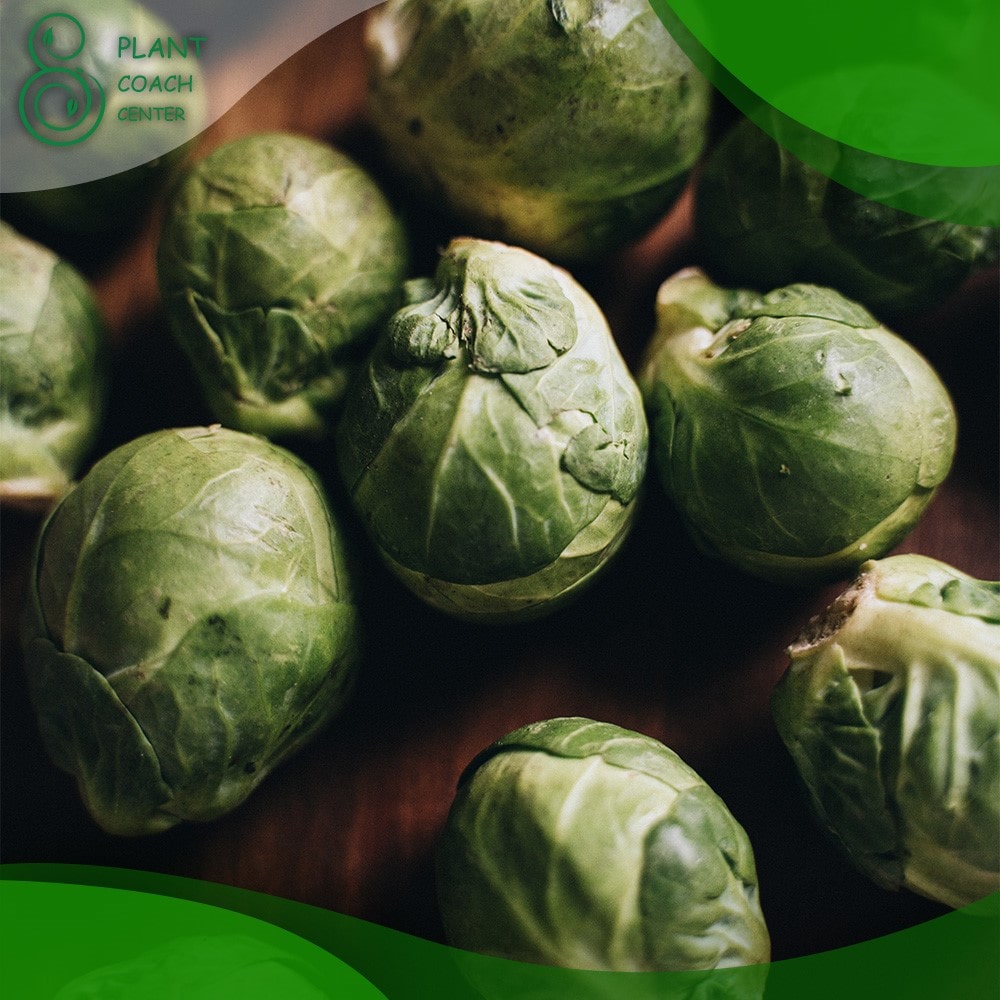When Do You Plant Brussels Sprouts?
Brussels sprouts have emerged as a beloved vegetable among gardeners and food enthusiasts with their miniature cabbage-like appearance. Revered for their rich, nutty flavor and impressive nutritional profile, these tiny green globes have found a cherished spot on dinner tables during the colder months.
However, understanding the ideal planting time and essential cultivation techniques is paramount to successfully cultivate these delectable delights and relish their homegrown goodness. In this article, we embark on a journey through the world of Brussels sprouts, unveiling the secrets to perfecting their growth. We will delve into timing, exploring the precise seasons and conditions for planting these winter-loving wonders.
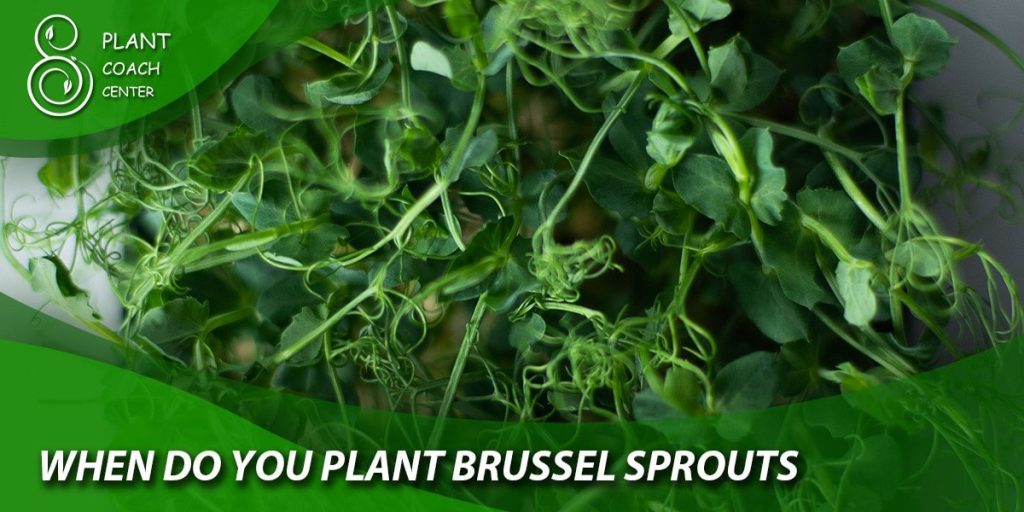
Additionally, we will explore the benefits of starting Brussels sprouts indoors and transitioning them to outdoor beds. As we progress, we will uncover the significance of companion planting, discovering the right allies to enhance their growth while keeping pests at bay. Moreover, this guide will illuminate the critical components of Brussels sprouts care, from providing optimal watering routines and soil conditions to ensuring they receive the right amount of sunlight.
Lastly, we shall tackle typical challenges that gardeners encounter while cultivating Brussels sprouts, equipping aspiring growers with the knowledge to overcome hurdles and relish a thriving harvest. So, whether you’re a seasoned gardener or a budding green thumb, let’s unearth the secrets of “When to Plant Brussels Sprouts” and savor the satisfaction of homegrown bounty.
Brussels Sprouts: A Winter Delight
Amidst the chilly winds and frost-kissed landscapes, Brussels sprouts emerge as a winter delight, adding a green vibrancy to the season’s culinary offerings. These compact, tightly-packed buds belong to the Brassicaceae family, commonly known as cruciferous vegetables, and are closely related to cabbage, kale, and broccoli. Renowned for their earthy, slightly sweet flavor and tender texture, Brussels sprouts have become a favorite choice for home cooks and chefs in seasonal recipes.
One of the primary reasons why Brussels sprouts thrive in winter is their natural adaptation to cooler temperatures. As the mercury drops, these resilient plants convert starches in their cells into natural sugars, lending a delightful sweetness to their taste. Furthermore, their dense structure enables them to withstand light frosts, enhancing their flavor and texture. As the temperatures dip, the plant’s energy is directed towards producing larger, juicier sprouts, resulting in a more satisfying culinary experience.
Besides their delectable taste, Brussels sprouts boast an impressive nutritional profile, making them an excellent addition to any winter diet. Rich in vitamins C and K and dietary fiber, these tiny wonders support the immune system, promote bone health and aid digestion. Additionally, Brussels sprouts contain essential minerals such as potassium and iron, contributing to overall well-being during the colder months.
For the avid gardener, planting Brussels sprouts in late summer or early fall is a strategic decision to ensure a bountiful winter harvest. Their extended growing period allows them to develop gradually, accumulating the nutrients and flavors that make them delectable. Plus, the reduced insect activity during winter minimizes the risk of infestations, easing the maintenance process for the gardener.
When it comes to culinary applications, Brussels sprouts are incredibly versatile. Roasting these petite globes with a drizzle of olive oil and a sprinkle of salt and pepper brings out their natural sweetness and imparts a delightful caramelization. Sautéing them with garlic and lemon zest creates a zesty side dish that complements hearty winter meals. For those seeking a more wholesome approach, steaming Brussels sprouts helps retain their nutrients and produce a tender, comforting addition to any plate.
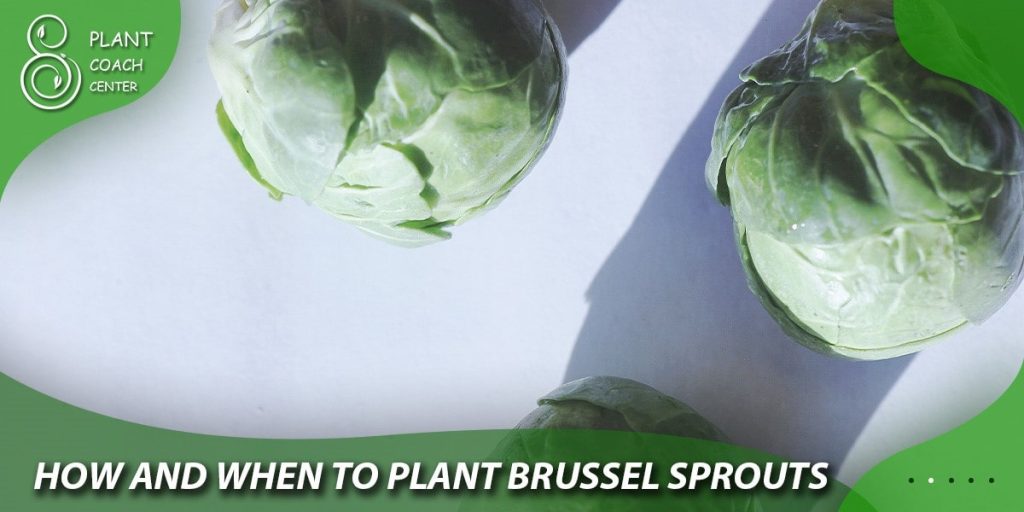
Timing is Everything: The Perfect Season for Planting Brussels Sprouts
Timing is essential for a successful and rewarding Brussels sprouts harvest. These cool-season crops have specific preferences regarding the timing of planting, ensuring they receive the optimal conditions to grow, thrive, and produce those delightful little buds. Understanding the perfect season for planting Brussels sprouts is critical to achieving a bountiful and flavorsome yield.
Embracing the Cool Temperatures
Brussels sprouts are cold weather champions, and their love for cool temperatures sets them apart from many other vegetables. Ideally, you should plant Brussels sprouts in late summer or early fall, approximately six to eight weeks before the first expected frost in your region.
This timeframe allows the plants to establish robust root systems and develop sturdy stems before the harsh winter weather sets in. While they can endure light frosts, extreme cold or heat can hamper their growth, so timing is crucial to strike the right balance.
Starting Indoors or Direct Sowing
Many gardeners prefer starting Brussels sprouts indoors to get a head start on the growing season. Around eight to ten weeks before the anticipated transplanting date, sow the seeds in individual containers, providing them with ample Light and consistent moisture. Once the seedlings have grown to about 4 to 6 inches tall and have developed a few true leaves, they are ready for transplantation into the garden.
Alternatively, you can directly sow the seeds outdoors in late summer if the climate allows. Ensure the soil is well-prepared, rich in organic matter, and drains well to support healthy growth. Keep the soil consistently moist during germination, and thin the seedlings to allow sufficient space for each plant to flourish.
The Transplanting Process
When transplanting the seedlings, it is essential to provide them with enough space to spread their roots and thrive. Maintain an 18 to 24 inches spacing between each plant, allowing for good air circulation and reducing the risk of diseases. Gently remove the seedlings from their containers, taking care not to disturb their delicate roots, and plant them at the same depth they were previously growing. Water the transplants thoroughly to help them establish quickly in their new environment.
Watch Out for Frost Dates
As winter approaches, keep a close eye on the weather and be prepared to protect your Brussels sprouts if a sudden cold snap or frost is forecasted. Mulching around the plants can help insulate the soil and provide additional protection. Additionally, consider using row covers or cloths to shield the plants from freezing temperatures during extreme cold spells.
From Seed to Sprout: Starting Brussels Sprouts Indoors
Starting Brussels sprouts indoors is a strategic and rewarding approach for gardeners looking to get a head start on the growing season and ensure robust, healthy plants. By providing controlled conditions and early care, you can nurture vigorous seedlings that will thrive when transplanted into the garden. Let’s delve into the step-by-step process of starting Brussels sprouts indoors to set the stage for a successful cultivation journey.
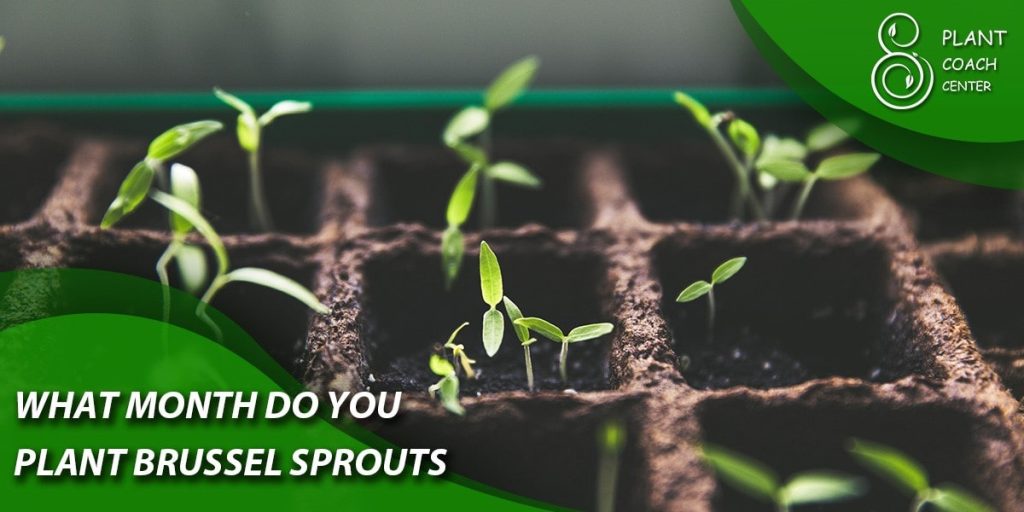
Selecting the Right Seeds
Begin by choosing high-quality Brussels sprouts seeds from a reputable supplier or store. Opt for varieties well-suited to your growing zone and have a history of success in your region. Some popular types known for their flavor and performance include ‘Long Island Improved,’ ‘Diablo,’ and ‘Jade Cross.’
Timing is Key
Determine the right time to start your seeds indoors, typically around eight to ten weeks before the last expected frost in your area. Check the frost dates for your region and count backward to find the ideal sowing date. Starting too early may lead to leggy seedlings while starting too late might not give the plants sufficient time to mature before winter sets in.
Preparing the Seed Trays or Containers
Use clean, sterile seed trays or small containers with drainage holes to avoid issues with fungal diseases. Fill them with a high-quality seed-starting mix that provides nutrients and drainage for the young seedlings. Moisten the mix before sowing the seeds to ensure even moisture distribution.
Sowing the Seeds
Carefully sow the Brussels sprout seeds, placing one source in each cell or container at approximately ¼ to ½ inch depth. If using larger containers, space the seeds about 2 inches apart to allow adequate room for growth. Cover the bases lightly with the seed-starting mix and gently pat it down.
Providing Optimal Growing Conditions
To promote germination, ensure the seeds stay consistently moist but not waterlogged. You can cover the trays or containers with plastic wrap or use a humidity dome to create a greenhouse-like environment. Place them in a warm area with temperatures between 70°F to 75°F (21°C to 24°C) to encourage faster and uniform germination.
Embrace the Light
Once the seedlings emerge, remove the plastic cover or dome and move the trays or containers to a location with bright, indirect Light. A south-facing windowsill or using fluorescent grow lights placed a few inches above the seedlings will provide the required light intensity for healthy growth.
Transplanting the Seedlings
The seedlings will be ready for transplantation as they grow and develop a few true leaves. This typically occurs when they are about 4 to 6 inches tall, around four to six weeks after sowing. Harden off the seedlings by gradually exposing them to outdoor conditions for a week before transplanting. Then, transplant them into the garden, ensuring proper spacing for healthy development.
Companions in the Garden: Choosing the Right Neighbors for Brussels Sprouts
Companion planting is an ancient gardening practice that strategically places plants next to each other to benefit their growth, health, and productivity. Regarding Brussels sprouts, thoughtful companion planting can enhance flavor, repel pests, and promote a harmonious garden ecosystem. Let’s explore some ideal companions for Brussels sprouts that can make your garden thrive.
Onions and Alliums
Brussels sprouts and onion family members, such as onions, garlic, and shallots, are excellent companions. Onions act as natural insect repellents, deterring pests like aphids and cabbage worms that can damage Brussels sprouts. Additionally, the strong scent of alliums can mask the smell of Brussels sprouts, making it harder for pests to locate them.
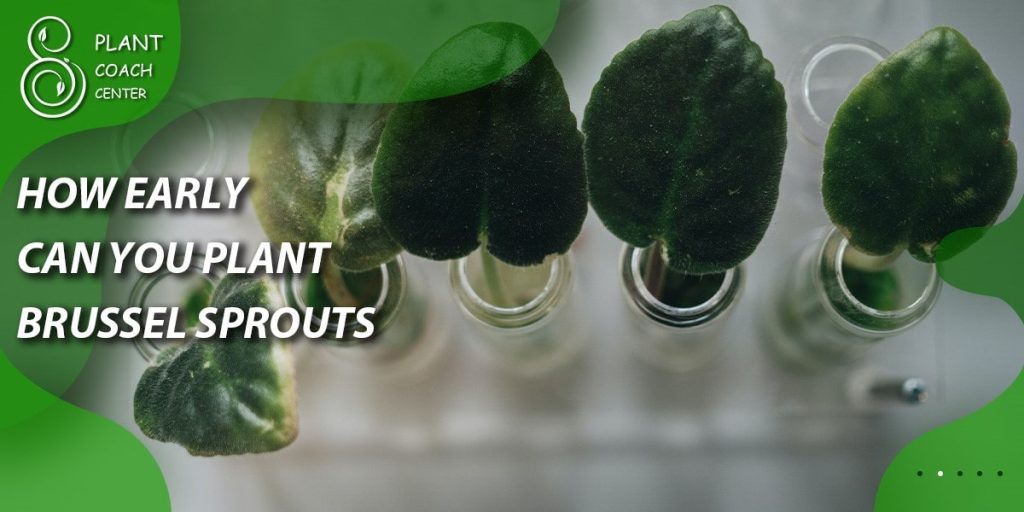
Herbs to the Rescue
Interspersing herbs amidst your Brussels sprouts can provide multiple benefits. Herbs like dill, thyme, and rosemary attract beneficial insects that prey on common pests, acting as natural pest control agents. Furthermore, herbs like chamomile and mint can improve the flavor of Brussels sprouts and add aromatic diversity to your garden.
Nurturing with Beans and Peas
Legumes like beans and peas are excellent companions for Brussels sprouts. These nitrogen-fixing plants help replenish the soil with nitrogen, which is beneficial for the growth of leafy green vegetables like Brussels sprouts. In return, the Brussels sprouts support the climbing beans and peas, creating a mutually beneficial relationship known as “companion planting symbiosis.”
Marigolds
Marigolds are renowned for their pest-repellent properties. Planting marigolds around your Brussels sprouts can keep harmful insects at bay as a natural pest deterrent. Their bright flowers also add a splash of color to your garden, creating an attractive and functional border for your Brussels sprouts bed.
Avoiding Brassica Neighbors
While some plants make excellent companions for Brussels sprouts, avoiding planting them alongside other Brassica family members is essential. These include cabbage, broccoli, cauliflower, and kale. Growing them together can spread common pests and diseases that affect Brassicas, potentially damaging your entire crop.
Beneficial Flowers
Incorporating certain flowering plants into your Brussels sprouts garden can attract beneficial insects like bees, butterflies, and ladybugs. Bees aid in pollination, essential for Brussels sprouts to set seeds. Ladybugs and butterflies are voracious consumers of pests, providing natural pest control. Flowers such as the cosmos, zinnias, and alyssum are famous for attracting beneficial insects.
Mastering Brussels Sprouts Care: Water, Soil, and Sunlight
Proper care is essential for the successful growth of Brussels sprouts, ensuring they reach their full potential and yield a delectable harvest. Mastering the art of providing adequate water, well-suited soil conditions, and optimal sunlight will reward you with robust and flavorful Brussels sprouts. Let’s delve into the critical elements of Brussels sprouts care and how to best nurture these cold-season gems.
Watering Wisely
Consistent and adequate watering is crucial for the healthy development of Brussels sprouts. As a rule of thumb, provide about 1 to 1.5 inches of water per week through rainfall or irrigation. To prevent waterlogging and potential rot, ensure the soil has good drainage. Consider using a soaker hose or drip irrigation to water directly at the root zone, minimizing water contact with the foliage.
During periods of dry weather, pay close attention to the soil moisture, as Brussels sprouts can become stressed and bolt (prematurely produce flowers) if subjected to extended drought conditions. On the other hand, avoid overwatering, as excessive moisture can lead to root diseases. Strive to maintain a consistent and balanced watering routine to keep your Brussels sprouts thriving.
Soil Requirements
Brussels sprouts thrive in nutrient-rich, well-draining soil with a slightly acidic to neutral pH level (around 6.0 to 7.5). Before planting, amend the soil with organic matter, such as compost or well-rotted manure, to improve its structure and fertility. The addition of organic material not only provides essential nutrients but also enhances water retention and drainage.
Perform a soil test to assess the soil’s nutrient content and pH level. Based on the results, adjust the earth to create an optimal growing environment for your Brussels sprouts. Healthy soil will lead to healthy plants, ensuring they have the necessary resources to develop robust stalks and abundant shoots.
Sunlight
Brussels sprouts thrive in full sun, requiring at least six to eight hours of direct sunlight daily. Plant them in a location that receives maximum sun exposure to promote vigorous growth and the development of sweet and tender sprouts. In areas with sweltering summers, some partial shade during the hottest part of the day may be beneficial to prevent stress on the plants.
To optimize sunlight exposure, space your Brussels sprouts plants appropriately, providing sufficient distance between them to avoid shading one another. Adequate sunlight enhances their growth and contributes to the accumulation of natural sugars that make the sprouts delectable.
Mulching Matters
Applying a layer of organic mulch around the base of Brussels sprout plants can provide multiple benefits. Mulch helps retain soil moisture, reducing the need for frequent watering and protecting the plants from temperature fluctuations. Additionally, mulch suppresses weeds, which can compete for nutrients and water with your Brussels sprouts. Organic materials like straw, wood chips, or compost work well as mulch options.
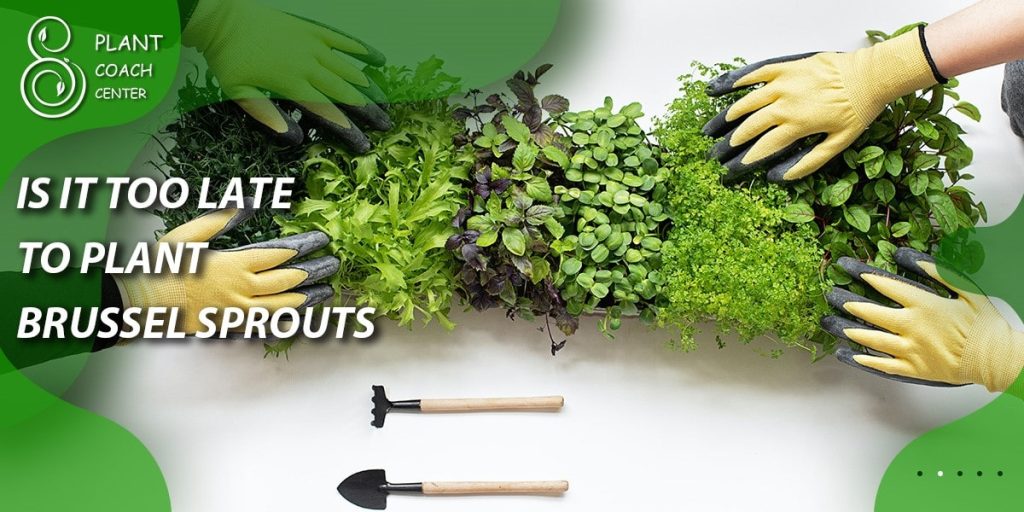
Conclusion
In conclusion, mastering the art of growing Brussels sprouts is a gratifying journey filled with valuable insights and rewarding prope results. By understanding the perfect season for planting, starting them indoors with care, and choosing the proper companions in the garden, gardeners can ensure these winter delights thrive and flourish.
Paying close attention to their water and sunlight needs allows for healthy development and a delectable yield. However, challenges may arise from pests and diseases to nutrient deficiencies and timing concerns. The Key to overcoming these obstacles lies in proactive troubleshooting and prompt action. Aspiring growers can find comprehensive resources and guidance on Brussels sprouts cultivation at plantcouchcenter.com, empowering them to nurture a successful garden filled with nt and flavorful Brussels sprouts.
With dedication, patience, and the knowledge gained from this article, seasoned gardeners and eager beginners can enjoy the satisfaction of Harvesting and savoring their homegrown Brussels sprouts through the winter months.
Can Brussels sprouts withstand cold weather?
Brussels sprouts are cold-hardy and thrive in cooler temperatures, making them an excellent choice for winter gardening.
How do I prevent pests from damaging my Brussels sprouts?
Introduce natural predators like ladybugs or use organic sprays to deter pests, and consider companion planting with onions or herbs known for repelling insects.
When should I start harvesting Brussels sprouts?
Begin harvesting Brussels sprouts when the sprouts are firm and reach about 1 to 1.5 inches in diameter, starting from the bottom of the plant and working your way up.


